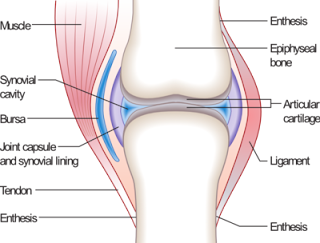Bones-Joints

Types of joints 1. Movable joints The bones of these joints are separated by a pad of flexible cartilage. There are two type of movable joints: a. Slightly movable joints: -are found adjacent between adjacent vertebrae. The cartilage between the joints (called intervertebral disc) absorbs shock. They can be displaced due to injury. Other e.g. Pivot joints: between neck and cranium. b. Synovial joints: the bones are held together by ligaments and are separated by synovial fluid. The fluid lubricates the joints, preventing the joints and cartilage caps of the bone from rubbing against each other. e.g. hinge joints: elbow, and knee ball and socket: at shoulder and hips 2. Immovable joints These joints are held firmly in position by fibers. They exist betwee...
